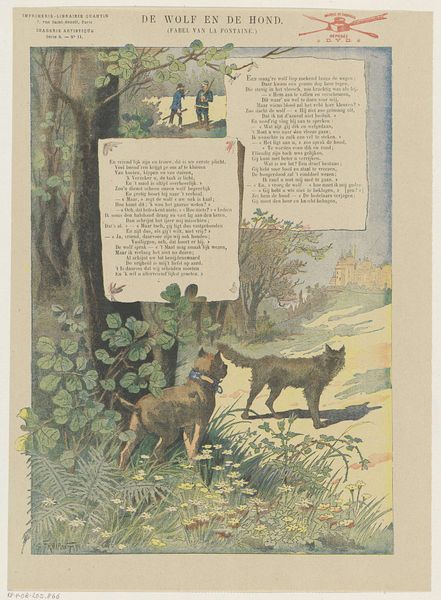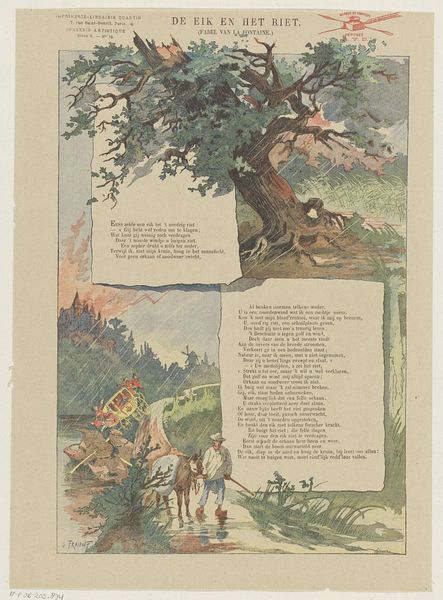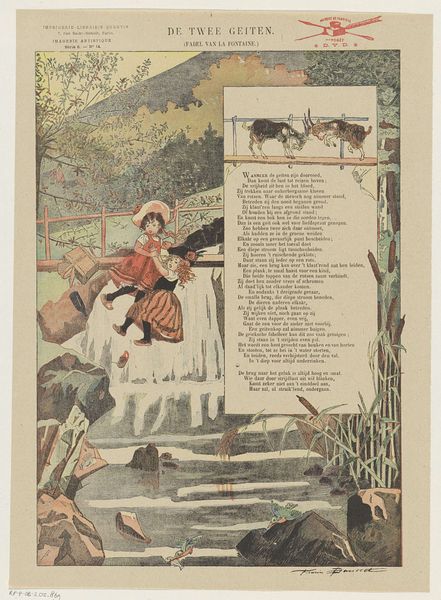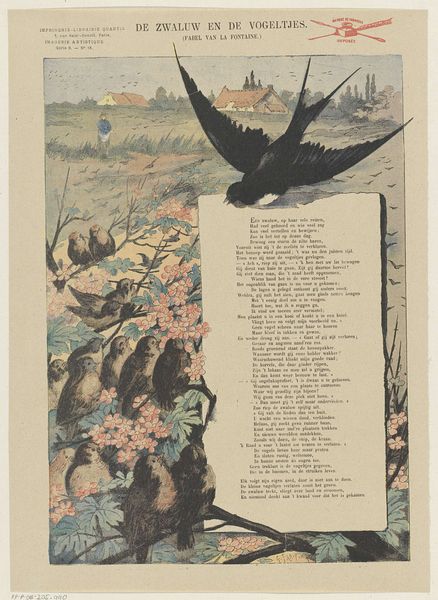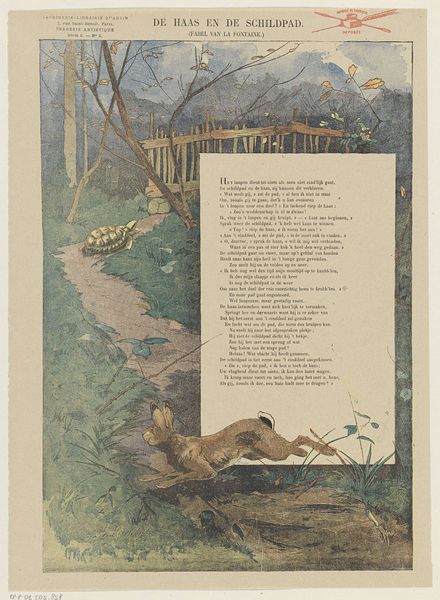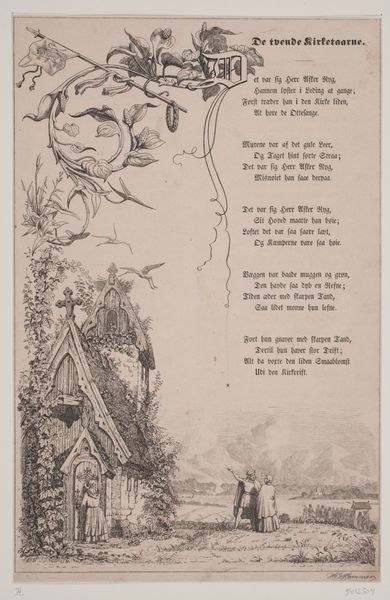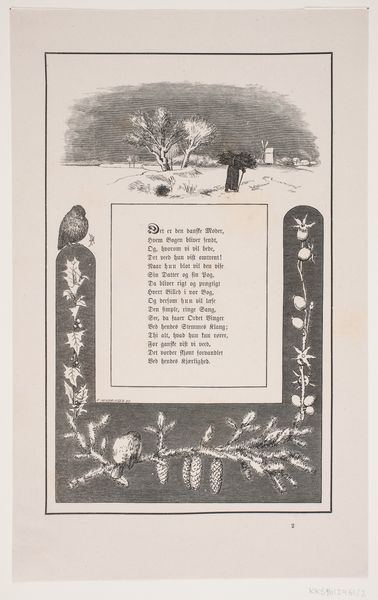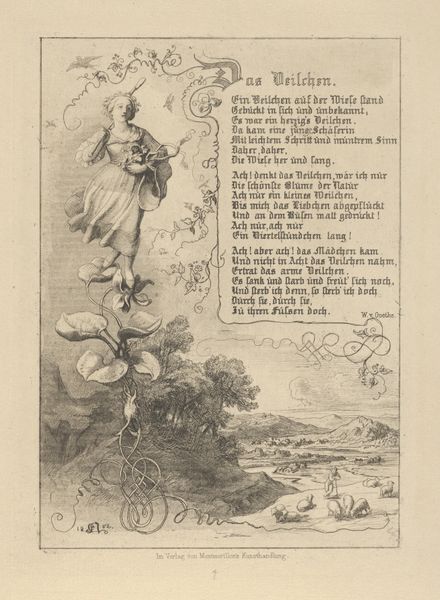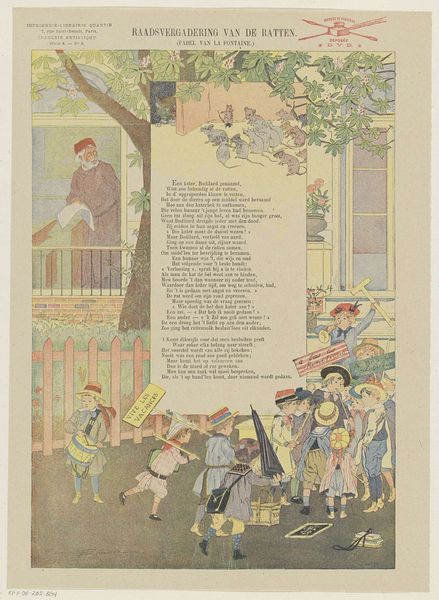
Dimensions: height 364 mm, width 267 mm
Copyright: Rijks Museum: Open Domain
This print, "De wolf en het lam," likely created around the turn of the 20th century by Gustave Fraipont, employs lithography, a printmaking technique that gained popularity with industrialization. The image is made using a printing stone or metal plate with a design applied using a greasy substance. The plate is then treated so that ink adheres only to the design, allowing multiple impressions to be made efficiently. This process allowed for mass production and distribution of images, making art more accessible to a wider audience. Here, the artist's hand can be seen in the soft gradations of tone and the delicate rendering of the natural world. These visual qualities are enabled by lithography. Yet, the fact that this image could be reproduced ad infinitum also speaks to wider social issues of labor, politics, and consumption. Understanding the techniques employed reveals the image's dual nature as both a work of art and a product of industrial processes, challenging traditional distinctions between fine art and craft.
Comments
No comments
Be the first to comment and join the conversation on the ultimate creative platform.
